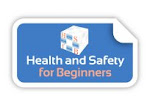13 August 2006
- The Legislation News pages have been updated where you can read more on the following:
- The Fire (Scotland) Act 2005 (Consequential Modifications and Savings) Order 2006
- Consultation on the implementation of EU Directive 2003/99/EC - the Zoonoses (Monitoring) Regulations 2006
6 August 2006
- The Legislation News pages have been updated where you can read more on the following:
- A new article has been published with thanks to System Concepts
5 August 2006
- A new training provider has been added to our Training Pages.
1 August 2006
- The Legislation News pages have been updated where you can read more on the following:
- Proposal for Work at Height (Amendment) Regulations
- The ever growing HAVS levels database created by Mark Sutton has been updated once again, download the updated version below:
- HAVS Levels Database by Mark Sutton (.xls) Spreadsheet - Updated 01/08/06

